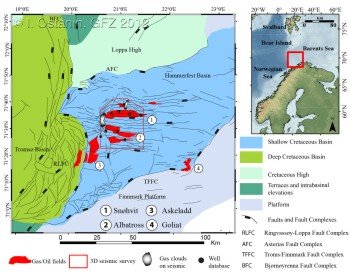Post-glacial rebound dynamics and leakage of hydrocarbon in the Hammerfest Basin, SW Barents Sea
Scope
We carry out a detailed investigation of the hydrocarbon plumbing system over the reservoirs of the Hammerfest basin and its dynamics in response to multiple phases of tectonic uplift and glaciations. The main goals of this project are to (1) identify past and present indicators of liquid and gaseous hydrocarbons leakage in this basin and (2) estimate the possible leaked volumes of thermogenic methane though time by means of numerical modeling.
Hydrocarbon leakage associated to focused fluid flow, both in the subsurface and on the seabed, is a widespread phenomenon in many sedimentary basins worldwide. The process may be expressed on the seabed as pockmarks, mud volcanoes, carbonate mounds and in the subsurface as seismic pipes, sediment intrusions, amplitude anomalies and gas hydrate systems. Besides impacting directly the deep sea marine environments and the benthic fauna, hydrocarbon leakage and shallow gas pockets can be geohazards for offshore installations, resulting in blowouts. Additionally, it represents a potential petroleum exploration tool to investigate migration and remigration of hydrocarbons. Accumulations of shallow gas and gas hydrates also form potential energy sources, which could be exploited commercially. Understanding of the present-day and paleo gas seepage is essential when reconstructing the basin evolution in terms of its thermal and burial history.



